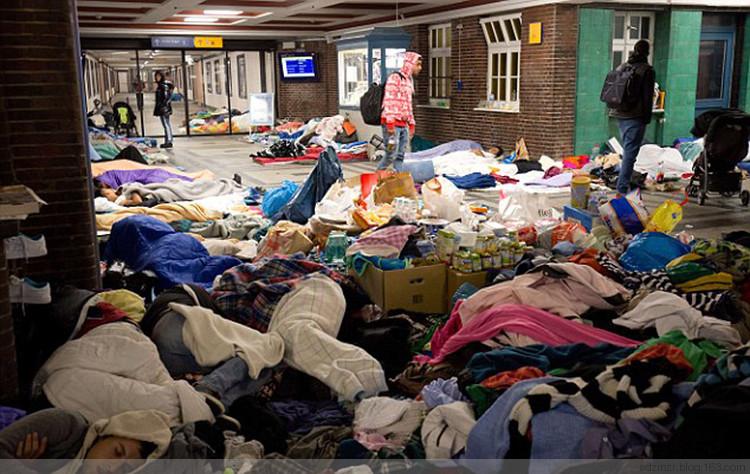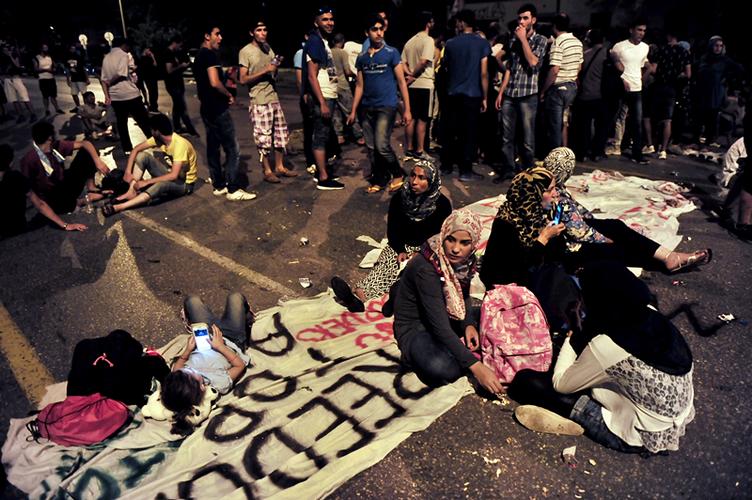
Sweden, which was considered an inclusive country for immigrants, has entered an era where more people are leaving than those entering. It is interpreted as the aftermath of the change in immigration policy stance of countries in the region due to the European refugee crisis, as well as the negative influence of far-right parties on refugee acceptance.
According to the Guardian on the 19th (local time), the Swedish government recently announced that net immigration between January and May this year was negative for the first time in half a century. During this period, 5,700 fewer people moved to Sweden than those who left to live in other countries.
Maria Malmer Stenergaard, Sweden’s immigration minister, said, “The number of refugee applications is heading towards historically low levels, asylum-related residence permits continue to decline, and Sweden recorded negative net immigration for the first time in 50 years,” predicting the trend to continue. The reason is that the number of immigrants has decreased by 15%, the number of immigrants has increased by 60%, and asylum applications are the lowest since 1997.
Refugee support groups criticize the Swedish government’s aggressive policies and rhetoric against immigrants as the main reason for the refugees to leave. The Guardian also pointed out that the Swedish moderate government has been pushing for increasingly restrictive asylum policies, including the Push Act, under the influence of the far-right. The Push Act is a law that forces workers in the public sector to report illegal immigrants.
Sweden was not harsh on immigrants from the beginning. Since the 1990s, Sweden has accepted asylum seekers from major conflict destinations such as Yugoslavia, Syria, Afghanistan, Somalia, Iran, and Iraq. In addition to being humane, there was also a practical purpose of securing a labor force to drive economic growth. As a result, the number of foreign births in Sweden last year increased to one-fifth of the population.
However, Sweden’s inclusive immigration policy stance began to change in late 2015. At that time, more than 160,000 migrants fled civil war and violence in Syria, Afghanistan, Iraq, and Somalia, sending unemployment and housing prices soaring, and anti-immigrant public opinion increased due to the government’s fiscal spending burden.

In particular, the fact that the Swedish Democratic Party (SD), a far-right political party with white supremacy under the banner of white supremacy, made strides in the Swedish general election in September 2022 and became a real force influencing government policies accelerated Sweden’s anti-immigration stance. The coalition government formed by Swedish Prime Minister Wolf Christensen (Middle Party) fell short of the parliamentary majority, making it difficult to secure policy momentum without cooperation from the Swedish Democratic Party. Under pressure from far-right parties, Sweden has strengthened the requirements for employment immigration to work contracts and eligibility for permanent residency, while the requirements for relocation of low-skilled workers have also become stricter.
The Swedish government, including Minister Stenergaard, seems to be praising the phenomenon of refugees leaving Sweden as a policy achievement, saying, “Efforts are bearing fruit.” It is based on the judgment that the efficiency of social integration can be increased only when the number of immigrants decreases.
However, Annika Sandlund, head of the Nordic and Baltic States of the United Nations Refugee Agency (UNHCR), said, “Considering Sweden’s labor shortage and aging trend, such a policy may not be a beneficial option. Successful social integration should create a social atmosphere in which immigrants feel welcome.”
JULIE KIM
US ASIA JOURNAL



